Peaceful Packers Llamas
LLAMAS LEND PEACE TO LIFE'S JOURNEY
Peace, Joy + Love to All
|
|
|
|
Molly's Web Page |
|
|
|
||
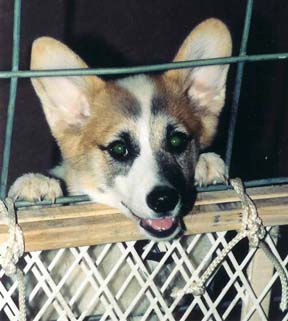 |
||
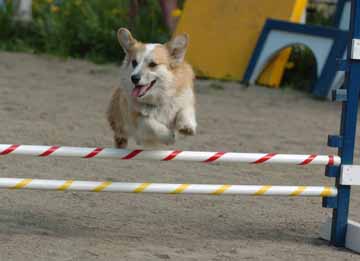 |
||
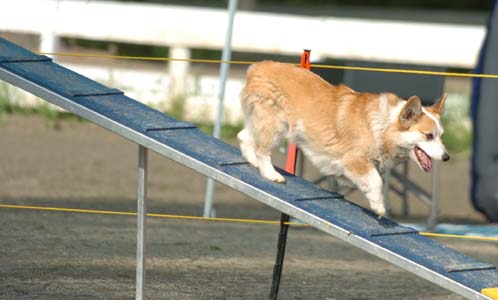 |
||
|
|
||
| English folk-poem |
|
||
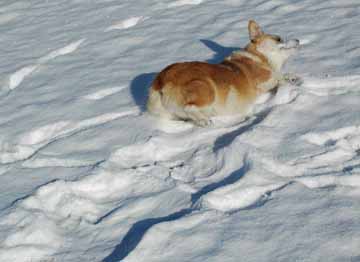 |
||
|
|
||
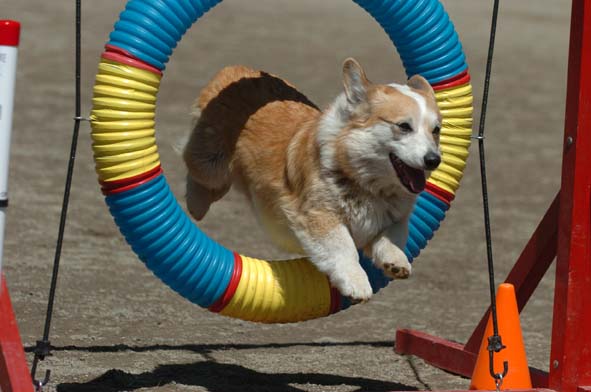 |
||
|
Molly's Titles |
|
|||||||||||||||||||||||||||||||
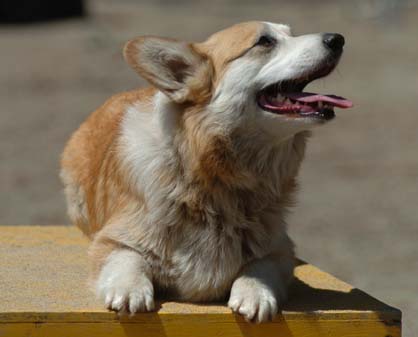 |
|
The Corgi |
Some
people believe that the Welsh Corgi is a distinct and quite different
creature which was left in the regions of Wales by the "wee folk".
Legends record that the Welsh Corgi was used by "wee folk" to pull
carriages and to be steeds. Today, each Welsh Corgi still possesses
distinctive marks on her/his shoulders representing the little saddles
used by fairy riders. Other people believe that the Welsh Corgi is an ancient breed of dog. There are two distinct breeds: the Pembroke Welsh Corgi and the Cardigan Welsh Corgi. The Pembroke Welsh Corgi breed developed in the Pembrokeshire region of Wales, which is near the sea. Direct ancestors of the modern Pembbroke Welsh Corgi may have been brought into Wales by Flemish weavers around 1107 A.D. These early dogs bore a remarkable resemblance to the old Schipperkes. The Pembroke Corgi is thought to descend from the same family of dogs which include the Keeshond, Pomeranian, Samoyed, Chow Chow, Norwegian Elkhound and Finnish Spitz. This European mainland dog-group is characterized by pricked ears, a pointed muzzle, and a curly tail. The Cardigan Welsh Corgi developed in the Cardiganshire region of Wales, which is inland and mountainous. They may have been brought to Wales by invading Celtic tribes from central Europe about 1200 B.C.. The European mainland dog-group from which they seem to decend is the Dachshund, or Tekel class which also includes the Basset Hound. These dogs are characterized by long bodies, deep chests, short legs, and heavier muzzles than the Spitz-types. The Pembroke Corgi was used by farmers in the flat lands and fields around Pembroke, Wales. The Cardigan, however, was used in the hills and mountains around the town of Cardigan. With mountains separating the towns of Pembroke and Cardigan, the two breeds may have developed in relative isolation. The striking similarities in appearance for these two breeds may be due to enterprising boys who would sell Cardigan puppies to the farmers of Southern Wales. The influence of those puppies brought about changes to the Pembroke type. All Corgi dogs had to be multi-purpose. Bird hunter, ratter, domestic duck and geese herding, cattle or sheep herding, sometimes even having to hunt his own food for dinner, as the Welsh population at the time these breeds developed were substance farmers with a hand to mouth existence for all. Today the Pembroke Welsh Corgi is the smallest member of the Herding Group. A recent development in the breed is that Great Britain has recently banned tail docking. The Pembroke Welsh Corgi can possess a natural bob, or it may have had its tail docked as a small puppy, to conform to the older breed standards. During one period around the 10th century the peasants of Wales were only allowed to keep small dogs for the destruction of vermin. Hired keepers, shepherds and herdsmen were also allowed to keep their dogs, but all dogs were required to be mutilated in some way to prevent poaching of the royal game. Some of these mutilations were quite severe (usually to the feet), but the herdsman's dog was required only to have his tail docked, or cur-tailed, so as not to interfere with his working ability. The people tried to evade this law, but penalties were severe and the monies from these fines were a welcome source of revenue to the crown. When these laws became unworkable, the crown then levied a tax on dogs. Realizing that the peasants could not pay these taxes, nor could they live without the help of a dog for certain tasks, an exemption from tax for dogs used for a purpose was provided. The shepherd or herdsman's dog was still exempt from this tax if his tail was docked. This interesting history is often put forward as to why the Pembroke Welsh Corgi has a docked tail, however these laws dealt more with the English Forest laws than with the Welsh. Since much truth is often found in legend, it is also told that the Pembroke Welsh Corgi's tail was docked so as not to confuse it with the fox. The most probable reason for docking Pembroke Welsh Corgi tails is that the Pembroke had a naturally occurring bob-tail and since many pups in a litter would be born with natural bobtails, the others were docked, as well, for the sake of uniformity. This bobtail gene is being specifically bred for again, especially in the United Kingdom and also in the Scandinavian countries where docking has been banned by the government. The word "Corgi" is either from the Welsh "cor" (dwarf) and "ci" (dog). (The " ci" becoming "gi" by normal mutation - resulting in corgi) or another interpretation is that of "cur dog" or "Cur". This interpretation can be dated back to one of the earliest dictionaries, to Wyllam Salesbury's "A Dictionary in Englyshe and Weslhe" London, 1574, where there is a reference to the "Korgi ne gostoc", that is, Corgi or curre dogge. (The use of the K rather than the C at that time was perfectly proper and eventually the K was no longer used interchangeably with the C.) The connection of the word " Corgi" with "Cur" has considerable historical support. There are many references to Corgwn (plural of Corgi - pronounced Corg'n, sound out like oxen) in many a cywydd (a song of praise) in the 14th and 15th centuries. It must be understood that the term Cur was not used in a derogatory sense when applied to dogs, as we do today. It did mean a dog of low breeding, as distinct from the "superior kinds" of dogs owned by the nobility. Cur generally indicated a working type of dog as opposed to the sporting and luxury or ladies' lap dog. Ancient Welsh Laws referred to three kinds of Curs: the Watch Cur; the Shepherd's Cur; and the House Cur. The Cur was truly a very useful and well-disciplined race of dog. It is interesting to note that some historians trace the origin of the Corgi back beyond its pastoral origins and connects it with the Nordic breeds. This connection is to Neolitic times when islander families lived on a diet of fish, sea-birds and their eggs, the soil on the islands being too shallow and poor for crop cultivation. It is through this connection that one can more easily understand how the Corgi came to be used for herding the huge flocks of geese and ducks kept in Wales to supply the demand for fine feathers and liver for pate throughout Britain. This could also explain the affinity many Corgis have for the water. Historians also speculate that the Corgi's role may also have been that of a wildfowler's dog, on the cliffs and in the caves of the Welsh coastline, to supply the trade in seabird's feathers and eggs. The Corgi or spitz-types were used to work the caves and rock faces to hunt out live birds. The Scandinavians believe our Corgi is descended from their Lundehund, one of the Spitz family group. The Lundehund has a similar ear carriage to the Corgi, and the ears can be folded back so that ear canal can be protected against wind, sand or moisture. Another breed resembling the Corgi in appearance is the Swedish vastgota-spitz, or Vallhund. Vall means farm or guard dog and he is in fact mainly a cattle dog from a particular Swedish province. There is a difference of opinion on the place of origin of the Vallhund. Some think that the original dogs brought to Sweden by the Vikings were the Corgis, which over the centuries the Welsh had turned from bird dogs to cattle dogs. Others believe that the introduction of the Vallhund from Sweden helped in the evolution of the Corgi as a cattle dog. It was well known that the Corgi was used as a heeler and a drover, especially on cattle. Some evidence does point to the Pembroke Corgi and the Vallhund sharing the same ancestry. Some historians believe the Vikings brought their short-legged cattle droving Vallhund and crossed them with the native Corgi "as he then was in Pembrokeshire, the Welsh dog was thus modified into two types - the earlier, longer-bodied, heavier and blunt-jawed Cardiganshire dog, and the type approximating to the Pembrokeshire breed with his typical Spitz head and abbreviated tail." The Cardigans of Cardiganshire, were spared crosses with the Nordic dogs because of their isolation and thus retained their aboriginal form in central Wales "undisturbed and relatively unaltered." The Corgi in Britain was primarily a drover of the Welsh cattle, but was also used as a guardian of the farmyard against invasion by any type of vermin from rats to fox and also helped to collect the different types of domestic fowl - from chickens to geese. With poultry wandering freely around the farmyard, there was always a risk of them being taken by predators, and an ever-alert Corgi helped guard against this happening. They were also quite useful in gathering the flock so that they could be housed for the night. When the huge flocks of geese were reared in Wales as a source of income, they were always a problem to guard and the Corgi fit the bill quite well. Taking them to market was quite a chore, and the only way to get a flock of two hundred or more of these large, quarrelsome geese to market was to drive them along the road to the town in which the market was held, whether this was the local market or Smithfield market in London. Corgis were unsurpassed in this task, and working in teams along roads they knew they could anticipate any moves for escape a flock might make. At this they were fairly silent workers, as too much noise would only serve to scatter the flock, yet they were strong-willed enough to control any goose that lagged behind or strayed. Corgis could also take command of cattle in certain situations on the farms, but it was as market dogs they excelled. (It should be noted that the "cattle" that the Pems were first bred to handle were the small black Welsh cattle - not the hulking breeds that you are most familiar with today.) The Corgi is a brave dog and in Britian has been known to go to ground after badger. They were actually shown in the terrier group when first admitted to the AKC stud books in 1934. To this day, Pembrokes still retain this easy adaptability to manage all different sorts of livestock, from poultry to cattle to pigs. On the whole they can be used for most any purpose on the farm, though as a sheepherder they are not as suitable as collies, Corgis being considered too sharp and excitable for sheep. They have even been used as gun dogs on both feather and fur and they are most efficient ratters. Because of the various duties a Pembroke was supposed to perform as a guardian and drover of livestock, dispatcher of vermin and companion to the farmer's children, his brave, steady temperament, physical agility and easily-kept compact size are paramount characteristics of the breed.
|
|
|
|
|
|
| Judah Farm's Molly | Date of Birth: 6.29.2003 |
| Microchip (Home Again) | 444C7E0420 |
| AKC Registration | DN03799304 |
| ASCA | 513924/513925/T062313 |
| CPE Agility | 04889-02 |
| USDAA | U127885 |
| NYS Dog License | 4471675 |